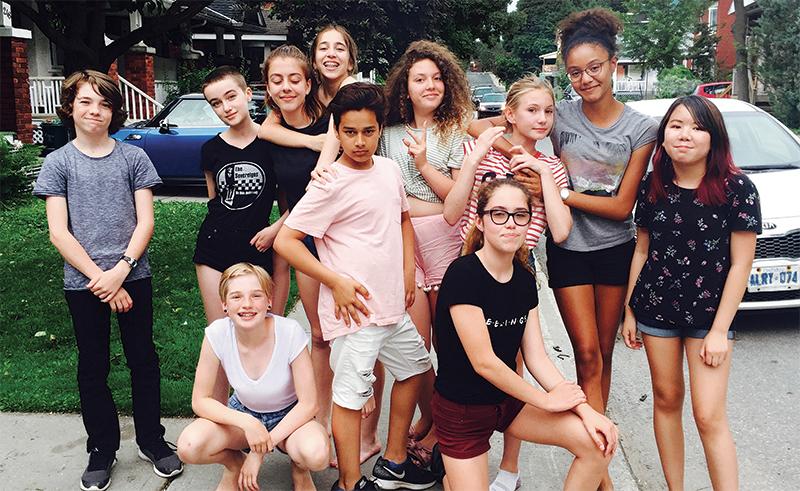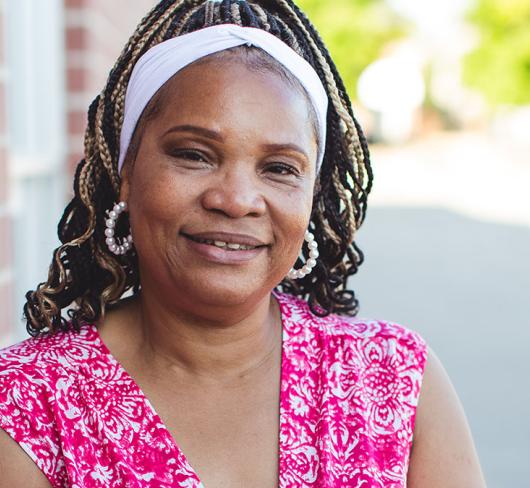
Back in Time is Not an Option: Cybersafety, Healthy Schools, and Consent – Preparing Kids for the Realities of Today
When I think back to how I was taught health, I remember my Grade 7 phys. ed. teacher perched awkwardly on her desk, fiddling with the oversized bow on her blouse (it was the 80s) and calling us “ladies” far more than usual. I remember blue mimeographed diagrams of a uterus and ovaries. I remember another teacher (was it in Grade 9?) bringing in various forms of birth control for us to examine gingerly.
But I learned nothing about same sex relationships or gender identity, nothing about sexual assault, harassment, bullying, physical autonomy, consent. The focus was almost exclusively on puberty, menstruation, heteronormative sex and pregnancy. And while there was some perfunctory discussion of body image and advertising, there was – obviously – nothing about the role of social media.
In 2015, after an extensive consultation process, the Ontario Liberal government introduced the newly updated health and physical education curriculum, which was welcomed by many who realized that the current version – from 1998 – was outdated, particularly where sex education was concerned. The revamped version addresses, among other things, the growing influence of social media, as well as greater awareness of consent, gender identity, sexualities and LGBTQ rights.
Social conservatives pounced, deeming this rewrite evidence of a “radical” agenda that would introduce kids to sexual concepts and anatomically correct terminology before they were ready to progress beyond terminology like “pee pee” and “private parts.” Discussion of what was actually in the curriculum, however, rather than what social conservatives claimed or were worried about, remained vague.
But regardless of what was there, regardless of the difference between a teacher “prompt” (which provided optional talking points to respond appropriately to student questions) and the actual text of the curriculum and certainly regardless of what kids are actually dealing with, or want to know, the topic became a cornerstone of the Conservative leadership campaign and of Doug Ford’s leadership bid. “For too long the Liberals have ignored Ontario parents…They have introduced the sex curriculum based on ideology – a curriculum that teaches sensitive topics starting at an early age,” Ford asserted. And when he was elected premier, he scrapped the curriculum in favour of the 1998 version while the government arranged new consultations.
Newly minted Education Minister Lisa Thompson explained that the promised rewrite would ensure “every Ontarian has an opportunity to provide feedback.” And until that process is completed, Ontario schools will go back to using the most out-of-date health curriculum in Canada.
Personal discomfort with the topics of sex and sexuality, a general lack of trust in young people or simply a loss of parental control over what kids learn and when they learn it, seem to be at the root of much of the misinformation circulated about the updated curriculum. But there’s a distinct contradiction in simultaneously feeling that kids are “too young” to learn about “all that” and worrying that the moment they learn about any of “that” they’ll become wildly, insatiably sex-obsessed as opposed to just more knowledgeable about sex as both biology, and as something that is deeply entwined with who we are and how we understand and feel about ourselves and others.
I know my schooling (to say nothing of my parents) fell short when it came to teaching me about sexual and reproductive health, even as a purely biological process. As a preteen and teen, I was told the best defence against sexism and harassment was to simply ignore it. If someone was snapping my bra strap or flipping up my skirt, it just meant he liked me and I should take it as a compliment, even if I found it humiliating. (Or maybe it meant that I was being too flirtatious and should consider adjusting my behavior.) Like so many of my friends, rather than learning about consent, I grew up learning how to stop my ears from hearing derogatory comments. I unwillingly got used to the utterly disempowering feeling of being treated as a series of body parts while walking in the school hallways or in the mall.
This spring, I sat down with my daughter and a group of her friends in the final week of Grade 7 (and after the Ontario election) to talk about sexism, harassment, casual misogyny and homophobia inside and outside of their school, the role they think schools and teachers should play in helping them confront it and the importance of health and sex education and other resources to equip them in supporting themselves and each other in pushing for safe and respectful classrooms and communities.
The kids were keenly aware of the need to be supported by parents, educators and the school community as they navigated the journey towards high school and eventually adulthood. And key to this was the word “support” – they knew they still needed guidance and information. They wanted their realities addressed by the education they were receiving and wanted it to be relevant to their lives. They recognized that what might have been acceptable a generation ago was no longer and, particularly when it came to sexism and homophobia, was often not just inaccurate but deeply damaging. And because pushing back can be difficult – particularly when peers are involved – they wanted educators to make it clear that sexual harassment, sexism and homophobia at school will not be tolerated, and to provide language, tools and support to help kids stand up to it and stop it.
I was reminded that because kids stop talking about a problem doesn’t mean the problem has gone away; sometimes it means that they haven’t found the support they need to address it.
They discussed with anger and frustration the degree to which casual sexism and homophobia are present in their daily lives. A boy who was not interested in a girl who had a crush on him was called gay by his classmates. Certain dance moves were gay. The kids expressed dismay at girls tolerating sexist slurs by male friends because it was a “joke.”
Students were clear; what they wanted was a shift in the school culture to eliminate hurtful and damaging behaviour and attitudes. This begins with the curriculum, but needs to be extended to the apparatus of the school itself, including educators, staff and administrators.
The kids were very concerned about what the repeal of the health curriculum – which, at the time of this conversation, hadn’t yet happened but had been discussed – would mean for others who wanted and needed accurate, honest and accessible information about sex and would be unable to get it. They talked about understanding healthy and respectful relationships and respectful schools, as well as basic knowledge about sex and sexuality, particularly for kids who were uncomfortable talking about these issues with their parents. They were very aware that teachers needed to be supported in knowing how to talk about these issues with students, but also that they be allowed to talk about them, even in the context of potential parental discomfort. And they wanted to be equipped with accurate information, relevant to their lives, that would help keep them safe and healthy.
They wanted to be taken seriously, and they wanted health education, which includes sex ed and lessons about consent, to be taught and learned in a context that reflected the interconnectedness of the world around them. They were adamant that addressing sex as a series of biological functions divorced from their reality (which includes pop culture, social media and their personal observations) did nothing to make it more interesting or even less “awkward.”
More generally, they wanted to be addressed directly and responsibly, and they wanted their privacy respected. They wanted to know that their comfort – and their discomfort – their safety and their well-being mattered to the people around them, particularly those in positions of authority who could help make things better. Because, really, who doesn’t want that?
In July, Education Minister Lisa Thompson announced that the Conservative government would be returning Ontario students to the 1998 Health and Physical Education Curriculum. In response, groups across Ontario have organized to put the safety of children first by pressuring the government to return to the 2015 version. We know from research and practice that having the language to name our body parts and being empowered to understand consent and healthy relationships and address issues such as sexism and homophobia not only helps kids navigate their social worlds but, in some cases, it saves their lives.
Erika Shaker is a senior education researcher with the Canadian Centre for Policy Alternatives and the editor of Our Schools Ourselves.

